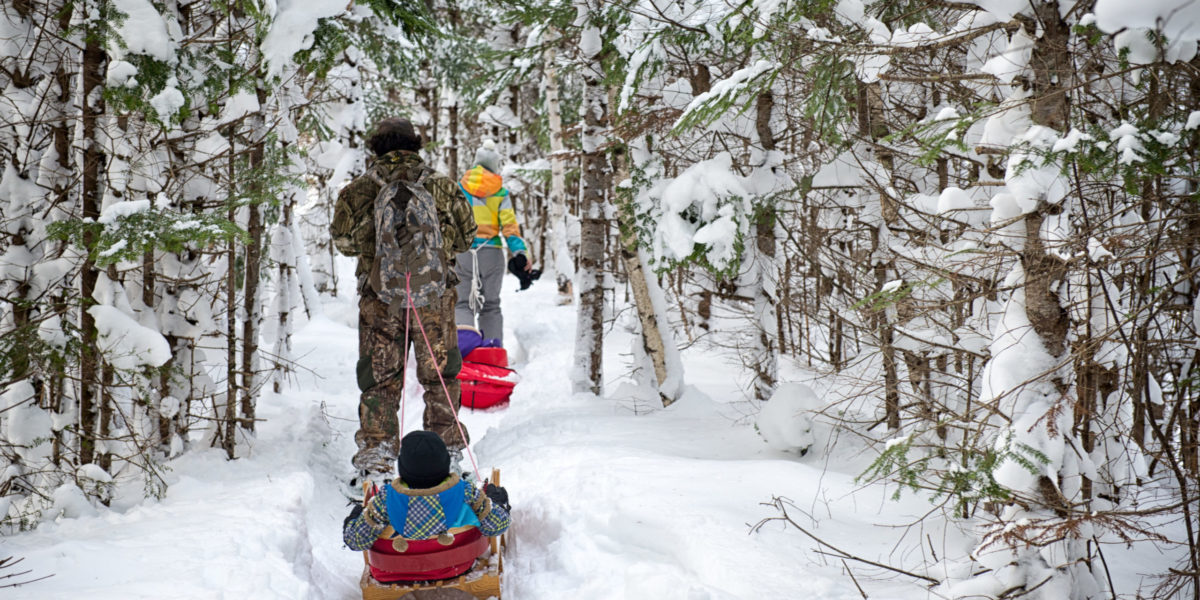Canada is a forest nation. Forests cover about 38% of its lands, and Canada’s boreal forest is the largest remaining intact forest in the world.
These forests are the spiritual home, traditional territories, and source of livelihood for hundreds of Indigenous communities.
Canada’s boreal forest is a carbon super-storehouse. Its trees and soils hold over two hundred billion tons of carbon, the equivalent of more than fifteen years of the world’s greenhouse gas emissions. And it provides more than $700 million a year in ecosystem services in the form of carbon storage, flood control, and water filtration.
And, of course, forests provide employment for 200,000 Canadians, and economic benefits to many towns and cities across the country.
And it’s not all about humans. As Dr. Suzanne Simard explains, forests are complex, interconnected, and living systems that support myriad life forms. Forests provide the basis of survival for hundreds of other species: billions of birds pass through or nest in the boreal each year, and numerous threatened species, including the iconic woodland caribou.
The Government of Canada – and the logging industry – claim that Canada’s forests are being sustainably managed, that the logging sector is a climate solution and that forest habitats are safeguarded.
But are we really stewarding these critical ecosystems for present and future generations?
There are at least four reasons that suggest we need to do better.
First, we are allowing a significant amount of intact and primary forests to be degraded and lost each year. Between 2008 and 2018, Canadian forests have seen an average of about 700,000 hectares cut annually – the equivalent of logging the area of the city of Vancouver, sixty times over, each year.
Since 1986, an area of forest larger than Ontario has either been logged or burned by wildfires. Canada ranked third in intact forest loss behind only Brazil and Russia between 2000 to 2013. In some areas productive, old-growth forests have almost disappeared: a recent study found that only three per cent of BC remaining forests support large trees.
Second, loss of forests constitutes a significant threat to species. Scientists found that in Quebec alone, industrial logging has led to a reduction from 88 per cent to 51 per cent of undisturbed caribou habitat.
Thirdly, there is growing evidence that current clearcutting of primary forests is causing massive net greenhouse gas emissions. A recent report by four major environmental groups found that net logging emissions are more than 80 Mt a year in Canada – equivalent to the total emissions of all oil sands operations. Shockingly, these emissions are hidden from Canadians and the international community due to the Department of Natural Resources’ biased forest carbon accounting system. Among other flaws, Canada does not report the emission from wildfires since that’s ‘nature’s doing’ yet takes the credit for the carbon removed by forests through natural tree regrowth after fires. This sleight of hand effectively cancels out almost all emissions from logging, making logging look carbon neutral.
Calls for the government to more accurately measure forest carbon are growing–not just from the environmental community, but also from the NDP , Senators like Rosa Galvez, and others. The Auditor General recently announced a review of Nature Based Solutions that will include scrutiny of forest carbon accounting given the growing evidence of a biased system.
Recognizing the true carbon impacts of logging intact forests is a necessary first step to putting in place policies – and investments – to incentivize the protection of intact forests with Indigenous leadership, and transition our forest sector to value-added, jobs-rich sustainable economies. All eyes should be on Canada’s forthcoming 2030 Emissions Reduction Plan (ERP) to see if it tackles the significant emissions from the forest sector.
Finally, only seven per cent of Canada’s forests are protected. That falls far below Canada’s commitment to protect 30 per ent of land and ocean by 2030. Greater investment in Indigenous-led conservation is needed to ensure that all nations that want to protect their forests can do so.
2022 offers an important opportunity to advance the protection of Canada’s irreplaceable intact forests. Canada has committed to a goal of halting and reversing nature loss by 2030. But, just as climate targets without action plans are meaningless, Canada needs a clear action plan to achieve this nature protection goal.
Conservation groups have called on Canada to deliver on a plan, with Indigenous leadership, to halt and reverse nature loss.
A commitment to end the degradation and destruction of Canada’s remaining intact forests should be part of this.
Let’s make International Day of Forests a day to commit to action to protect Canada’s forests – to further our shared goals of climate action, biodiversity protection, reconciliation and sustainable economies.
The time to act is now.




